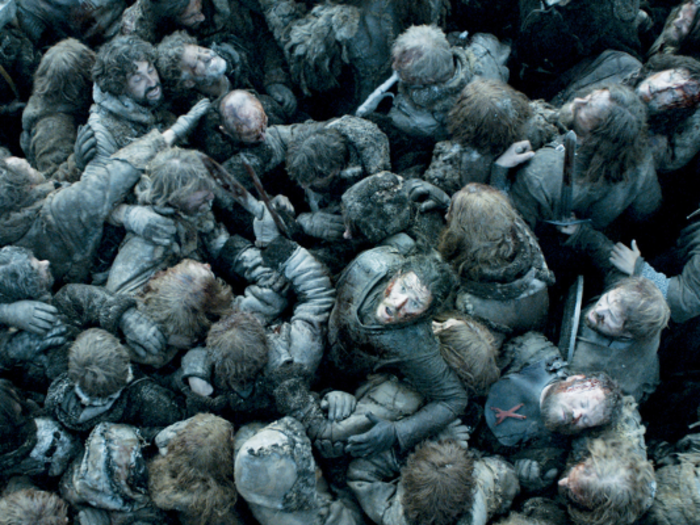- Home
- Military & Defense
- 5 times 'Game of Thrones' based schemes, massacres, and battles on real moments in history
5 times 'Game of Thrones' based schemes, massacres, and battles on real moments in history
There have been several Red Wedding-style attacks throughout the centuries

Westeros' colossal ice wall has a real-world counterpart

Martin first thought of the Wall on a trip to Scotland.
"I stood on Hadrian's Wall and tried to imagine what it would be like to be a Roman soldier sent here from Italy or Antioch," Martin told the SF Site. "To stand here, to gaze off into the distance, not knowing what might emerge from the forest."
Hadrian's Wall was hardly an imposing ice wall. And it didn't protect England from scary, winter zombies. Construction on it began in 122 CE, ostensibly to separate the Romans from the native Britons.
The blog "The History Behind Game of Thrones" explains that the Westerosi Wall and the initial treatment of the Wildlings mirrors "the Roman perception of the native Britons as the 'Other' — a distancing strategy employed to dehumanize, alienate, exclude and justify ill treatment of groups outside of one's own."
The Boltons share their habit of skinning people alive with an ancient regime

Getting flayed alive is probably one of the worst ways to go out.
So it's no surprise that skinning people was a favorite past-time of Ramsay Bolton — one of the worst characters to ever grace the small screen.
But this antagonist's gruesome hobby didn't simply come from the dark side of Martin's imagination.
In fact, one ancient kingdom was famous for skinning its enemies.
According to the blog History Buff, the Assyrian King Ashurnasirpal II claimed to have "flayed as many nobles as had rebelled against me and draped their skins over the pile of corpses; some I spread out within the pile, some I erected on stakes upon the pile … I flayed many right through my land and draped their skins over the walls."
Yikes.
The Battle of the Bastards is a twist on a famous Carthaginian victory

"The Battle of the Bastards," which saw the noble-hearted Jon Snow face off against the wicked Ramsay Bolton, was one of the most raved-about episodes of season 6.
The numerous immersive, intense battle scenes kicked this episode into high gear for many viewers.
The whole thing also likely looked rather familiar to classical scholars.
That's because the showrunners mirrored the whole clash on the Battle of Cannae, as Kristen Acuna wrote for Tech Insider.
That famous 216 CE battle is now regarded as one of the most impressive tactical victories of all time. After spending two years rampaging about the Italian peninsula, Carthaginian leader Hannibal Barca cemented his status as a military legend by surrounding and defeating his enemies with a much smaller force.
Ramsay's forces used a similar pincer movement during the Battle of the Bastards. Jon was ultimately able to subvert the historical model and break free of Ramsay's circle of death, with the help of reinforcements from the Eyrie.
In Hannibal's case, the Roman legions were butchered, leaving up to 70,000 dead, including Roman consul Lucius Aemilius Paullus.
Paullus' son-in-law Scipio Africanus would ultimately defeat Hannibal once and for all at Zama.
The fight between the Starks and the Lannisters should ring a bell for any medieval scholar

The War of the Roses might not have a terribly intimidating name, but it was a bloody conflict that sent England spiraling into disunity and chaos during the latter part of the fifteenth century.
The war was primarily fought between the House of York and the House of Lancaster.
Sound familiar?
Like their fictional counterparts, the Lancaster faction won the war after much death and scheming.
However, ultimately, it was the House of Tudor that prevailed and won the throne. They adopted the Tudor rose as their emblem, a combination of the white rose of York and the red rose of Lancaster.
Popular Right Now
Popular Keywords
Advertisement